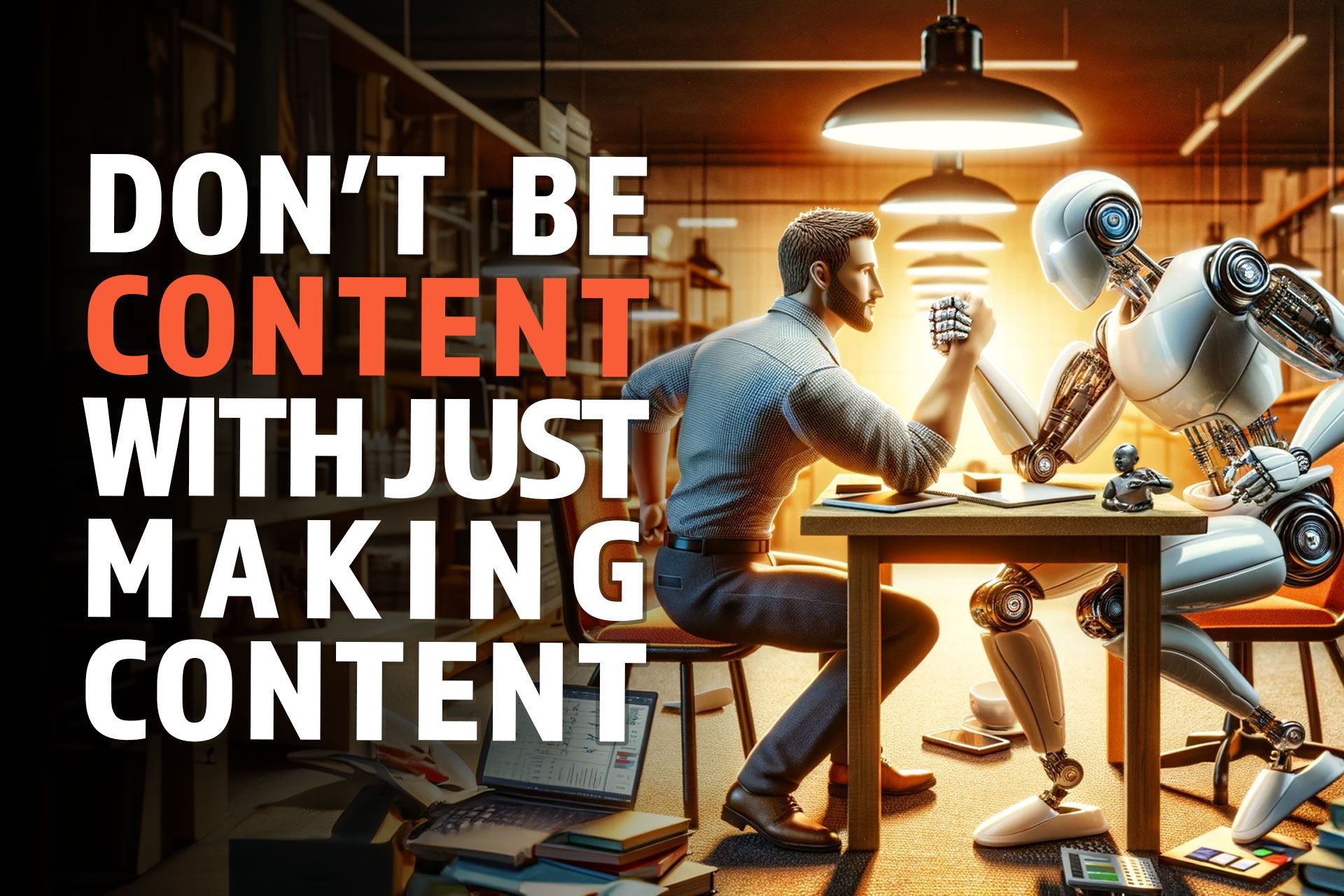Get in touch
555-555-5555
mymail@mailservice.com

My Thoughts
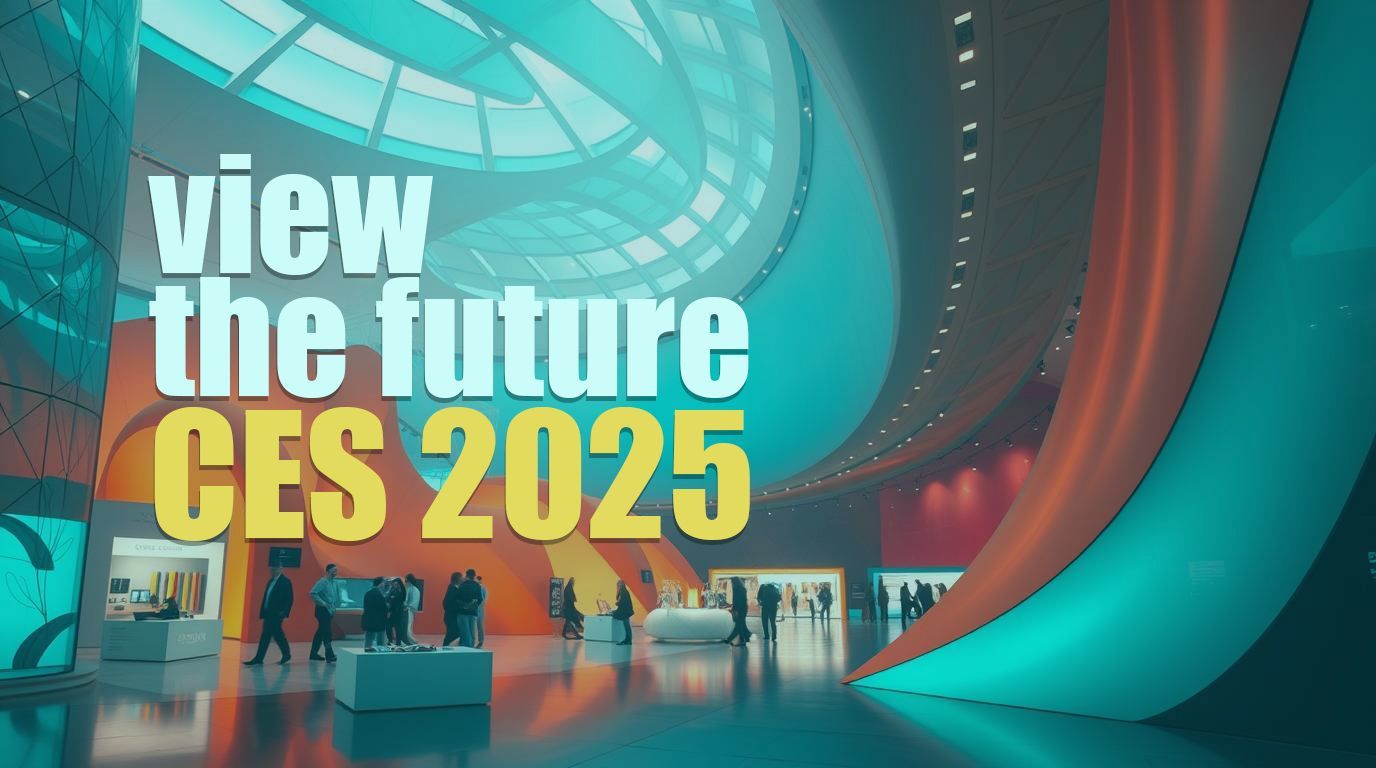
January 8, 2025
I’ve always loved CES. It’s my favorite thing about the new year—some people set resolutions, but I look forward to CES in Las Vegas. When I worked at SanDisk and Western Digital, we spent the last quarter of each year prepping for our presence at CES. It added another layer of excitement (and stress) on top of the holiday rush, but there was something magical about seeing industry leaders and startups alike unveiling fresh ideas and inventions. I pour over the coverage showing the all the innovations - and this year the buzzing around AI, advanced mobility, digital health, and more has been so fun to see. For retailers and e-commerce professionals, the show offers vital insights into evolving consumer expectations and next-level business technologies. While the biggest themes tend to get the most coverage, CES is also known for its more unconventional side—gadgets that inspire equal parts amusement and curiosity. In this article, I’ll blend personal experiences with current research and firsthand impressions from CES 2025, highlighting trends, strategies, and quirky innovations that could reshape e-commerce and retail in the very near future. Major Themes Shaping CES 2025 One of the clearest messages at CES 2025 is that artificial intelligence is quickly becoming the foundation of modern technology. From smart TVs that offer personalized recommendations to autonomous vehicles that process live road data, AI solutions are getting both more precise and more practical. For retailers, the emphasis is on AI-powered inventory management—reducing stock-outs and improving demand forecasting—along with hyper-personalized marketing that can dynamically adjust pricing and promotions based on real-time consumer behavior. Another dominant topic is digital health and wellness. Companies like AARP, EssilorLuxottica, and Withings are showcasing tools that tackle everything from longevity to remote patient monitoring and early diagnosis. For retailers, health-centric wearables and beauty-tech open up new revenue streams. Instead of generic, one-size-fits-all products, there’s a growing number of customizable devices and subscription-based services that make it easier for consumers to manage their well-being from home. Top Innovations and Why They Matter to Retailers AI Integration for Personalization and Efficiency Gone are the days when “AI” was just a trendy buzzword. At CES 2025, you see it in automated product recommendation engines and robust demand-planning software. These solutions account for seasonality, trending items on social media, and even global shipping disruptions. Retailers benefit from hyper-targeted campaigns that resonate more deeply with consumers, while behind-the-scenes machine learning algorithms cut picking times in warehouses and reduce the frequency of delayed shipments. Commerce Media Networks Larger retailers, including major online marketplaces and national chains, are busy building their own commerce media networks. By leveraging first-party data, they can offer specialized ad platforms to partner brands and suppliers—monetizing the visibility they already own. Smaller retailers can take advantage by partnering with these networks or, if they have a loyal and niche audience, exploring the possibility of developing a scaled-down ad network of their own. Smart Home & IoT Internet-of-Things devices remain a huge crowd-pleaser at CES. You’ll find everything from app-controlled lighting to voice-activated grills. For online retailers, curating product bundles around a “smart home” theme—such as a connected kitchen package—can spark consumer interest. Even outside the home, IoT solutions extend to supply chain tracking and in-store technologies, like smart shelves or cashierless payment systems. The upshot is clear: better data, smoother customer experiences, and new ways to differentiate in a competitive market. Emerging Trends in Customer Experience Immersive Shopping with AR/VR Augmented reality and virtual reality have become practical ways to reduce returns and boost conversions. At CES 2025, multiple brands demonstrate how AR apps let consumers virtually “try on” outfits or preview new furniture in their living rooms. This technology fosters greater confidence in the purchasing process, which directly translates to fewer dissatisfied customers and lower logistical costs for returns. It also helps brands stand out from competitors who still rely on static, 2D product galleries. Digital Health & Beauty Tech Some of the most exciting CES exhibits revolve around beauty-tech. Think smart mirrors that conduct skin analyses and suggest personalized skincare routines, or AR filters that help customers see how a lipstick shade will look in different lighting. These are more than gimmicks—when integrated into retail sites or apps, they can improve conversion rates, reduce the risk of wrong-color purchases, and boost overall satisfaction. Health-focused retailers can similarly partner with at-home diagnostic devices or fitness-tracking startups to deliver curated wellness experiences. Quirky Finds from CES 2025 Of course, CES wouldn’t be CES without a fair share of unexpected (and sometimes bizarre) product reveals. Here are a few show-stoppers that exemplify the playful side of tech innovation: Electric Salt Spoon by Kirin This small utensil sends gentle electric currents to your tongue, making low-sodium meals taste saltier. It’s an odd concept, but one with intriguing health implications for people watching their sodium intake. Mirumi Companion Robot Imagine a soft, sloth-like robot that clips onto your bag and reacts to the environment—shying away when approached by strangers or blinking sleepily when you enter a quiet room. It’s adorable and captures the idea of emotional support tech in a whimsical way. Halliday’s Smart Glasses Lightweight frames featuring a 3.5-inch private display. They handle real-time notifications, translations, and navigation. No more pulling out your phone to check directions or messages—just glance at the discreet screen in your field of view. Saros Z70 Robot Vacuum This isn’t your average vacuum. It picks up socks or toys with a miniature robotic arm, dropping them into a designated hamper. For clutter-prone households, it’s a futuristic convenience that goes one step beyond simply vacuuming. Toaster-Like Phone Charger Tired of cables? This charging hub, resembling a tiny toaster, “toasts” external batteries for phone cases. Its clever design meets practical function—and it’s perfect for anyone who wants a more playful spin on the mundane task of charging devices. While these gadgets might not be immediately central to most retailers’ strategies, they reflect the spirit of creativity and constant surprise that defines CES. Sometimes, such imaginative designs can spark marketing ideas or lead to unique brand partnerships. Data Privacy, Addressability, and Compliance With worldwide privacy regulations tightening, first-party data strategies are more vital than ever. Many retailers are collecting emails or phone numbers via loyalty programs, personalized offers, and transparent surveys to maintain both compliance and accuracy. Consumers want to know how their data is used and protected, so clarity in privacy policies goes a long way in building trust. In a CES 2025 panel discussion, the main buzzwords were “trust” and “compliance”—two pillars that must underpin any retailer’s data-driven efforts to personalize product recommendations, marketing campaigns, or new service rollouts. Key Takeaways for E-Commerce and Retail Leaders Invest in AI for Personalization Everything from recommendation engines to automated inventory management can reduce friction in the shopping journey while boosting sales. Embrace Immersive Technologies AR/VR features can set your brand apart, encourage shopper confidence, and minimize returns. Focus on Data Privacy First-party data collection, used responsibly, keeps you ahead of regulatory changes and fosters stronger customer relationships. Don’t Forget the Fun CES is a reminder that tech can be playful and unexpected. Even if products like electric salt spoons and companion robots don’t directly impact your business strategy, they can spark creative marketing ideas or lead to brand collaborations. My enthusiasm for CES never fades. As per usual, CES 2025 beautifully combines the serious—like AI-driven solutions—with the whimsical—like hallucinatory kitchen tools or sloth-like robots. For retailers, the question isn’t whether these innovations matter; it’s how quickly and strategically you can adapt them to meet (and exceed) evolving customer expectations. Whether it’s integrating AI to refine pricing, adopting AR to reduce product returns, or rolling out greener shipping materials, your ability to innovate will define your competitiveness. Above all, CES offers a glimpse of the future we’re collectively building—and it’s one where creativity, convenience, and responsible technology intertwine more seamlessly than ever.
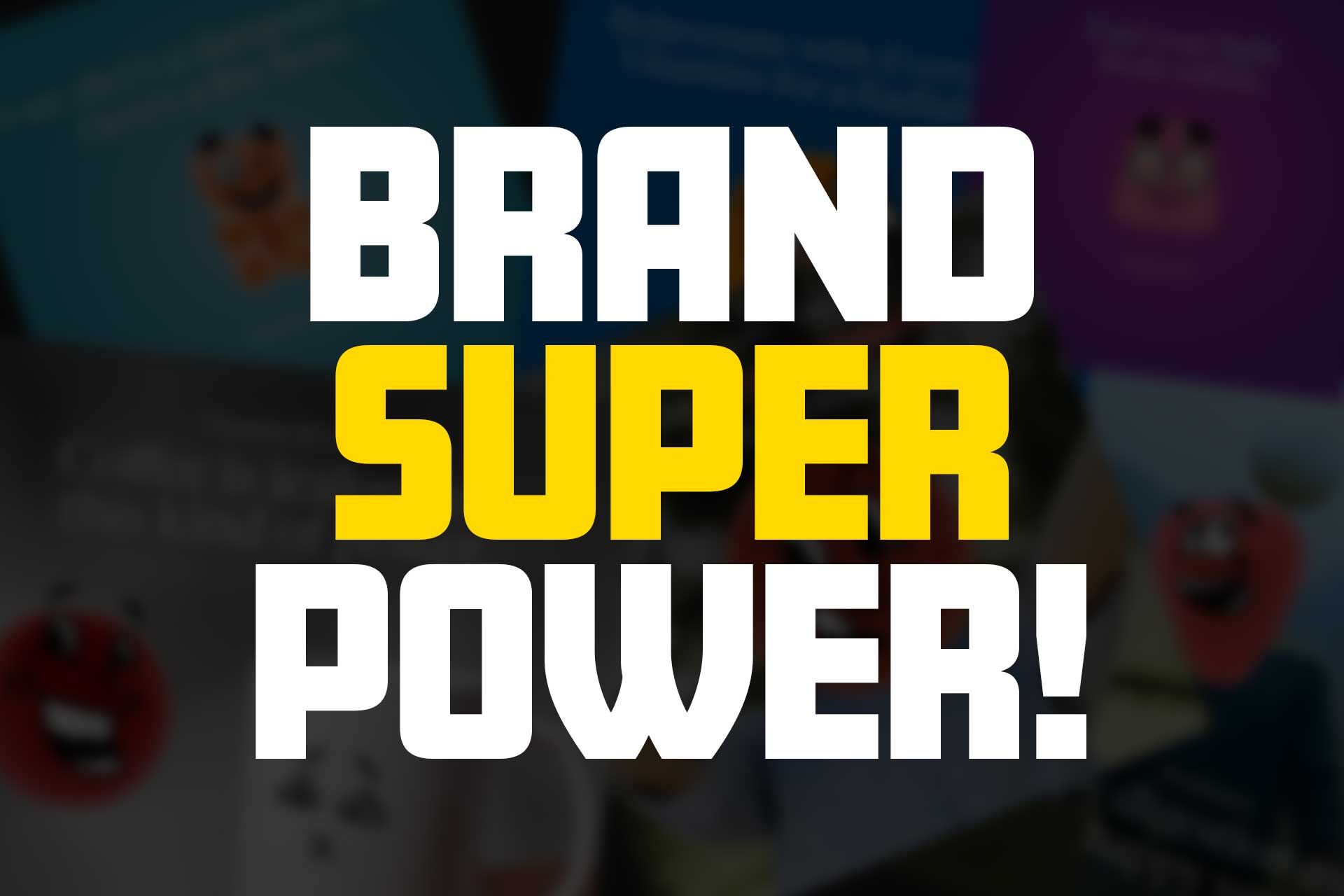
By Thomas Dickens
•
July 2, 2024
I recently led a brand strategy workshop with a client looking to break free from business as usual and envision a bolder future for their brand. Because when clients hire me as a brand strategist, my role is to uncover their core truth and articulate it in a way that resonates with their target audience. The first step was to conduct a thorough brand audit, analyzing the client's current brand assets, messaging, and market position. This allowed us to identify areas of strength, weakness, and opportunity. We also conducted competitive research to understand how the brand stacks up against key players in the industry. As we kick-started the creative process, I shared a few provocative images with new ideas. The goal was not to prescribe a specific direction but to simply open their minds to new possibilities and voices. The images are a little silly, I know and they won't be used publicly (Vitamins were just a way to spur the ideation process). However, inspired by these unconventional prompts, we embarked on a deep dive to reimagine the brand. We challenged ourselves to think beyond features and benefits and uncover the brand's authentic purpose and unique value proposition. Armed with these insights, we dove into a series of exercises to clarify the brand's fundamental purpose, values, and differentiators. We pushed beyond surface-level features and benefits to uncover the deeper emotional drivers that motivate their customers. By understanding the target audience's aspirations, challenges, and decision-making process, we could craft a brand narrative that speaks directly to their needs and desires. A key focus was developing a compelling and ownable brand positioning. We worked to identify the sweet spot at the intersection of the brand's strengths, market opportunities, and customer needs. The goal was to carve out a distinct space in the market where the brand could authentically thrive and differentiate itself from competitors. Throughout the workshop, we also focused on aligning the brand strategy with business objectives. We worked to define the impact of branding initiatives on customer engagement, loyalty, and ultimately, the bottom line. By tying brand strategy to tangible outcomes, we ensured that our work would drive meaningful results. Ultimately, the power of a strong brand lies in its ability to forge an emotional connection with customers. By unearthing the client's authentic truth and communicating it in a compelling way, we laid the foundation for a brand that can inspire lasting loyalty and advocacy. The workshop was just the beginning of the brand transformation journey. I look forward to continuing to partner with clients to bring their new brand identity to life and help them achieve their full potential in the market. When a brand is grounded in genuine insight and executed with consistency and impact, it can be an invaluable asset for driving long-term growth and success!
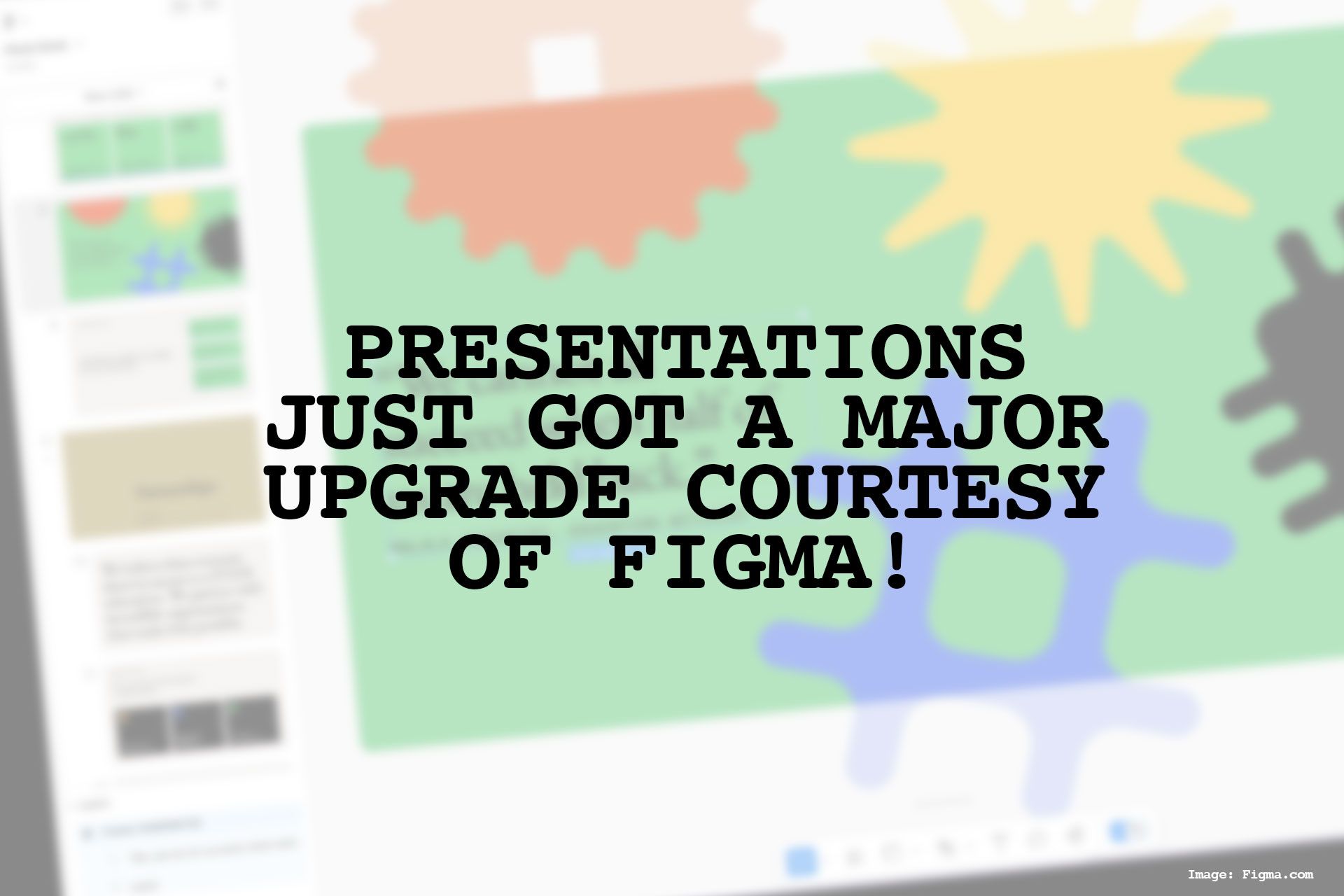
By Thomas Dickens
•
June 28, 2024
I've got to share my thoughts on the incredible news that dropped at Figma's Config event this week! They've just unveiled Figma Slides, and I'm absolutely blown away by how it could change how we give presentations. I mean, let's be real – we've all been stuck using dinosaurs like PowerPoint and Keynote for far too long. I can’t tell you how many times I have heard groans from sales teams, designers, and marketing teams about building slide decks. I had to look it up but according to the interwebs, PowerPoint was released in 1987. The Cutting Crew’s “I Just Died in Your Arms” was in the Billboard Top 10! Are we living on outdated ideas? Is it time for a change? I image the team at Figma approached the development process by quite literally bashing the frustrations and limitations of existing presentation software allowing them to ideate on something that would enable better collaboration in the design process but also consider the collaborative way we engage and experience meetings as both presenters and audiences – something that WFH might have necessitated. As a user experience designer myself and a long-time user of Figma, I love what Figma Slides is trying to solve. Even non-designers will be able to co-create presentations that will work and look great. Add in features like polls and contextual feedback, we’ll be able to connect with our audiences in a meaningful way. I can't wait to dive in and start exploring!

By Thomas Dickens
•
June 24, 2024
I just spent the weekend diving deep into the history of a synthesizer that wasn’t exactly iconic when it was released in the 80s. Why would I do that? Well, it just so happens that the Korg Poly-800 was the first “real” synth I ever bought back in 1986 when I was 15. Unable to afford it, my brother and his then-wife struck a deal with me: they’d buy it if I cleaned their dance studio complex every weekend for a year. Deal accepted.

By Thomas Dickens
•
June 13, 2024
Over the last few days, I have been following the controversy around Adobe 's update to the terms and conditions for its Creative Cloud services. It has sparked a furious debate in the design community, and it has been great to see such a deep engagement from Adobe’s core audience about it. The fury started a few days ago when Adobe's new terms rolled out not only granting the company broad rights to access, use, and sublicense user content, raising serious concerns about privacy, intellectual property, and the ethical use of AI but also in the user experience that forced acceptance before you could do anything else. Seeing this unfold made it clear to me that we have an urgent need for robust governance and compliance frameworks to help manage the complexities that come with the use of generative AI. Adobe has clarified their approach and you can read about it here: https://blog.adobe.com/en/publish/2024/06/06/clarification-adobe-terms-of-use The good thing about all this is that it has sparked a lot of discussions that I think are important to have as we navigate how artificial intelligence is transforming the world at an incredible pace. Its bringing with it both immense and exciting potential but with a need to be cognizant of the significant responsibilities to be good stewards of the technology as well. As organizations integrate AI into their operations, managing AI ethically becomes paramount. Here are a few AI compliance risks that I have thoughts about along with ways we might think about managing them. Navigating the complex world of AI systems have become critical issues and if we aren’t careful our misuse could undermine the adoption of a toolset that could create many benefits for the world. Not just in business use but in helping us in many areas, from healthcare to automotive safety systems. From unintended to purposeful egregiousness, bias and discrimination are one area that has a huge potential to destroy the credibility of AI. Organizations must implement bias detection protocols and conduct regular audits to ensure fairness. Additionally, fostering diversity within AI development teams is crucial as varied perspectives can significantly reduce the risk of bias. As seen in the case with Adobe, privacy concerns are also paramount, especially with stringent data protection regulations such as GDPR and CCPA. Organizations must conduct privacy impact assessments and maintain meticulous records of data processing activities. This goes beyond mere compliance, fostering trust with users who are increasingly concerned about their personal data. Some of the outcry from the Adobe controversy was around work that designers were doing for clients where they had strict NDAs in place for the work they were doing. If I understood the changes in the terms and conditions, it appeared that Adobe said they could take that work and basically use it however they wanted which would cause the designer to break contractual obligations. Security threats pose another significant challenge. In December 2023, A Chevy dealership in California deployed an AI powered chatbot that seemingly agreed to sell a nearly $60,000 Tahoe for the bargain price of $1 after being manipulated by the user. AI systems are prime targets for cyberattacks, necessitating regular updates to security protocols, comprehensive testing, and thorough documentation of security incidents. I recommend building a culture of security awareness across the entire product team to bolster these defenses. I am also big on the importance of transparency and accountability in AI systems. Developing “explainable” AI models and maintaining clear documentation of decision-making processes are crucial steps. We need to understand how decisions are made to build trust and ensure effective oversight as well making certain we get precise and/or expected outcomes. Ethics in AI development obviously can’t be overlooked either. We should work hard to establish ethical guidelines and perhaps even go so far as having an ethics review board to regularly review AI applications. This can help prevent harmful outcomes. Aligning AI use with societal values and the law ensures that AI technologies can be a positive addition to our world. The controversies surrounding how the AI models are trained is a great example of the care we need to give. How unique voices from artists, engineers, writers, and anyone that has come before gets assimilated into the tools we are starting to become dependent on is an important debate. Intellectual property issues can be complex. As we engineer our systems, conducting intellectual property audits and ensuring proper licensing and usage of data are essential. I believe firmly that protecting intellectual property rights fosters innovation rather than thwart it. Speaking of legalities, staying updated on evolving regulations is another critical aspect of AI compliance. It is imperative that we adopt a continuous education discipline to ensure we adapt AI systems to meet new standards as they emerge. We should have regular audits and build thorough documentation of compliance efforts to maintain adherence to regulatory requirements. If governments or lawyers stop by, being prepared and aware is better than having a costly gotcha moment. This includes the perils of inaccurate data handling which can significantly impact and undermine the reliability and trust of AI systems. Organizations must take care to validate data sources, audit data handling processes, and maintain thorough documentation to ensure data accuracy and regulatory compliance. High-quality data is the bedrock of reliable AI technologies and compliant use, storage, and transfer build trust and keep our system in line with laws governing their use. This is where balancing AI autonomy with human oversight is crucial, especially for critical decisions. Implementing human-in-the-loop systems brings oversight processes that ensure we, the humans, can intervene when necessary, maintaining control over AI actions. As careful as we try to be, we know that there will be unintended consequences and sadly sometimes misused. And sometimes those AI systems can be misused or produce unintended consequences that may have legal implications. This is where we must carefully consider potential misuse scenarios and implement safeguards to prevent harm and ensure compliance with relevant laws and regulations. When it comes to unintended consequences it is crucial that we conduct extensive user testing before we deploy and monitor and learn from use after we launch. We can’t expect to know everything yet. Even very experience engineers have said they don’t exactly understand how AI “thinks”. Being aware of the potential for unintended outputs can help us with how to handle or mitigate situations in a timely manner. Practical Steps for Effective AI Compliance Management My first thought is to go through identifying potential risks and prioritizing them based on their potential impact and likelihood. Understanding these vulnerabilities allows us to address them systematically and with the priority that each risk might pose. We should develop clear policies and guidelines tailored to specific operational needs by organizational aspect. It should outline acceptable practices, ethical guidelines, and compliance requirements. Clear documentation of these policies helps maintain consistent application across the organization. Training and education are also vital for building a culture of awareness and responsibility. Employees at all levels need to understand the risks associated with AI and their role in mitigating these risks. Implementing training programs, which include regular updates and practical examples, help embed compliance into an organizational culture. Cross-functional teams play a significant role in AI compliance. Given the multifaceted nature of compliance, involving members from data science, IT security, legal, and other relevant orgs ensures that all aspects are covered. Regular collaboration and communication between these groups are key to a successful and informed risk management process. I know I have said it a few times already, but I feel strongly that documentation is indispensable for transparency and accountability. It ensures that all decisions, actions, and changes are recorded, which is crucial for audits and reviews. Tools such as centralized risk registers, compliance management software, and maintaining audit trails help streamline this process. It also maintains consistency as team members move in and out of the organization. Continuity is a key aspect of maintain compliance and policy. It would be a good idea to maintain a centralized risk register to log all identified risks, their status, and mitigation actions. Compliance management software can automate processes like tracking regulatory changes and documenting compliance activities. Audit trails provide a chronological record of all compliance-related actions, making it easier to review and verify compliance efforts. While there is a lot to think about, ethical AI use is not just a regulatory requirement but a societal responsibility. Addressing biases, protecting privacy, and ensuring transparency are the foundations of building AI systems that are not only legally compliant but also trustworthy and actually provide something beneficial. Compliance will be an ongoing process that will require us to continuously educate ourselves, pursue proactive risk management, and a work in a collaborative approach – until AI can automate some of that too. With the right strategies and tools, we can navigate the complexities of AI compliance to fully realize the potential of AI.

By Thomas Dickens
•
June 5, 2024
This is not a sponsored or affiliate post PLEASE NOTE: The opinions expressed in this article are my own. I did not interview anyone at Cherry Audio for this article. This is my own observation based on my experience with the product. As a self-proclaimed synth nerd, I've spent countless hours crafting music on recreations of vintage synths. There’s something magical about the warm, analog sounds of these classic instruments that made some of my favorite songs. When I heard about Cherry Audio’s release of the virtual Rhodes Chroma , I was both excited and intrigued. The Chroma, has an amazing origin story and was used by the great Herbie Hancock, Spandau Ballet and many more! I was happy when they asked me to contribute a song to showcase the Chroma's capabilities in their demo. If you are interested in hearing it:

By Thomas Dickens
•
March 4, 2024
I've been fortunate to learn from incredible leaders throughout my career, and one pivotal lesson they've shared is this: no agency should ever know more about the business than I do, especially when it comes to strategy. A few years ago, at a different company, a top agency recommended that we switch our website's button color/CTA to a wildly bold color that wasn’t even in an adjacent brand color. They were confident their data indicated a significant performance boost. It would have been a very big change that had bigger implications than just the website. I was very skeptical but intrigued, so after reviewing the data we reworked the test to dig in more deeply. The result showed that it wasn't the color at all; it was the web copy that made the difference in how effective the CTA was. This was a stark reminder that the strategic insights of our internal teams are irreplaceable. Agencies Are Partners, Not Replacements Agencies have their place, bringing invaluable supplemental expertise, specialized skills, and fresh perspectives that can invigorate our strategies. However, it's crucial to remember that these external insights should never eclipse the deep understanding our internal teams have of our audience and product. The synergy between what we know and what we do defines our success. I've witnessed the pitfalls of over-delegating to agencies firsthand. One alarming incident involved receiving a strategy report so riddled with generic marketing jargon that the team and I were immediately suspicious. However, there were a few internal stakeholders that ate it up. A quick Google search revealed significant portions were copied from a free template with page after page of search results revealing other uses of the same text. It wasn’t strategic. In its original form, it wasn’t meant to be but here it was attempting to be passed off as the results of an in-depth analysis. Well, that was the end of that partnership and a good lesson that showed me that knowing “our stuff” was much better than relying on someone else. Rethinking Strategic Outsourcing A recent interaction with a couple of different marketers highlighted an interesting trend: some companies almost entirely outsource their strategic thinking and thought leadership to external partners. This reliance made me wonder about the potential risks. How can we ensure these agencies align with our brand's core values and not just their billing targets? How would they know what is working and what is not? One of these interactions was related to content strategy and SEO/SEM. The internal stakeholder didn’t know or understand the main principles and had full faith in their external agency. Yet, after my conversation ended, I used SEO tools to discover they had huge gaps in targeting and from a competitive analysis they were missing big opportunities that this stakeholder just didn’t have the expertise to understand. I don’t mean judge too harshly. This person was a seemingly smart and dedicated employee at their company. If they were happy with the results, then perhaps that is enough. However, for me, this situation served as a strong reminder of the necessity for internal oversight. It underscores the importance of not just trusting but verifying that external strategies complement our vision and capitalize on all opportunities. I believe a more synergistic approach, ensuring that teams are equipped with the knowledge to engage meaningfully in strategic discussions and collaborations with our agency partners will maximize success. Finding the Right Balance Navigating the fine line between leveraging external expertise and maintaining strategic autonomy is more art than science. How do we ensure that our internal vision remains at the forefront while benefiting from external innovation? I'm particularly intrigued by the rise of fractional CMOs or the transition some companies are taking by moving from a CMO to a CRO. Could this approach offer the strategic direction and high-level guidance without compromising command over strategy? This doesn’t even begin to address how generative AI is changing marketing as whole. That’s a whole future post. Times are changing. I'd love to hear your thoughts and experiences.
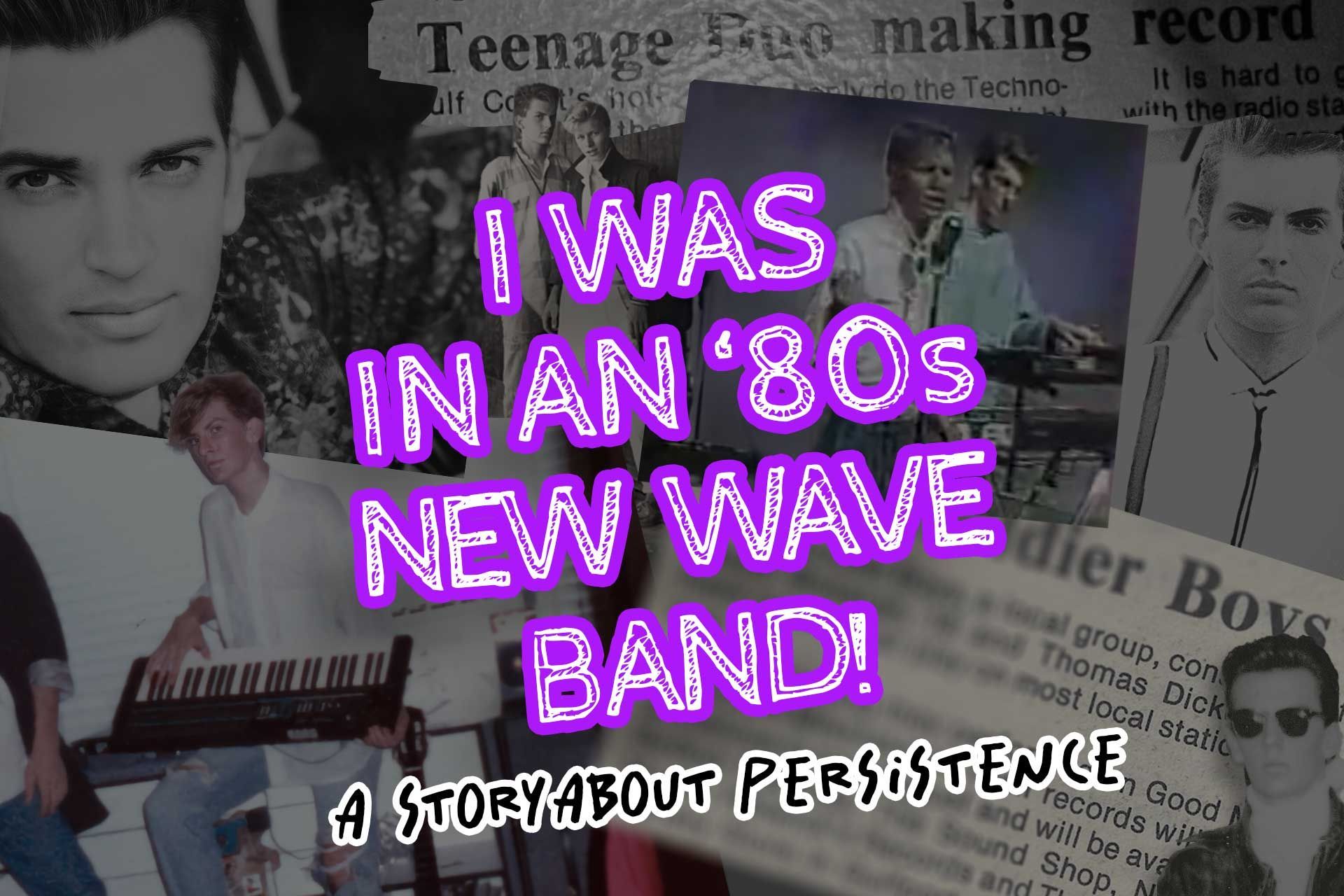
By Thomas Dickens
•
February 19, 2024
I was 15 years old in 1986 when I met Jason, the other half of my synth-pop duo through some friends in the “scene”. We were the “punk”, “new-wave” or “modern” kids that didn’t quite fit in anywhere in our small town in Southern Mississippi. There were very few of us that were in to this new genre. When Jason and I first started writing music together we immediately knew there was something there. We were totally aligned on our song writing framework and had a great time jamming. Things were simple. I had a single synth and some drum loops to help us sketch things out. We wrote our first single during that initial session and within a few weeks we were ready to hit the studio. But paying for it all would be a challenge. We didn’t have families with a lot of disposable income, so we had to get creative with how we financed our dreams. I took odd jobs like mowing lawns and cleaning a large dance studio and Jason, who could drive and was a bit older than me, sold his ’57 Chevy to pay for new equipment, recording sessions, and the production of our record. Once in hand, we spent every waking moment selling copies of our record. We’d go to malls around the region and talk to teenagers (mostly girls) and pretend we were from England and touring our way through America. If you could only hear our terrible British accents. It worked. We sold a ton of records and eventually struck deals with record stores in the area to carry our song. We were getting known but there was one thing we knew we needed – radio airplay if we were going to move the needle. Jason and I would stop by every radio station around and cold call the program director. Most of the time we were sent away without getting a meeting. One time we spent over 6 hours waiting in the lobby of the #1 station in the area until they finally relented and agreed to meet with us - only to be rejected within the first few minutes. It was a tough break but we wouldn’t be deterred! This was all happening during the Christmas season and while we were at one of the local record stores, to our surprise that program director we had waited over 6 hours to meet with was in the store. Seeing the look on his face when he saw us walking towards him made me quite nervous after being rejected so many times, but we were determined to get on the radio and weren’t going to squander this chance to talk to him. We were very polite but made the plea to give us a chance throwing out the line “But it’s Christmas”. And to our shock and maybe even his, he reluctantly agreed to put us on the radio! This station had a popular call-in show where they would play 2 new songs, mostly from well-known artists, and listeners could call in to vote for their favorite. We couldn’t have been more excited. These days social media would have been the perfect tool to rally our growing fan base but in our case, we got on the phone and called everyone we knew and then asked them to call everyone they knew to listen and vote for us. It was only a few days later that we had our first ‘bout in the station’s “Jam-off”. That first night, our fans blew up their phone lines. The station said they’d never had that many call-ins and their phone lines stayed busy even we were announced as the winner. Night after night our song won. We went up against bands like Bananarama, Duran Duran, and RUN-DMC. When our song finally “lost” after a couple of weeks, the radio station told us that we had really won but they needed to move on but said because of the popularity of our song they’d put us on regular rotation. We were so excited! During this time, several other radio stations picked up the song. We were eventually featured in some magazines, newspapers, and even on TV. Later, we almost signed a major record deal. Even Disney’s Hollywood Records reached out – that’s a funny story. I learned something powerful as a young teenager. If you want something to happen, tenacity, persistence, hard work, and even going against the grain are required to get there. This lesson came in handy as I pivoted to a new career path.
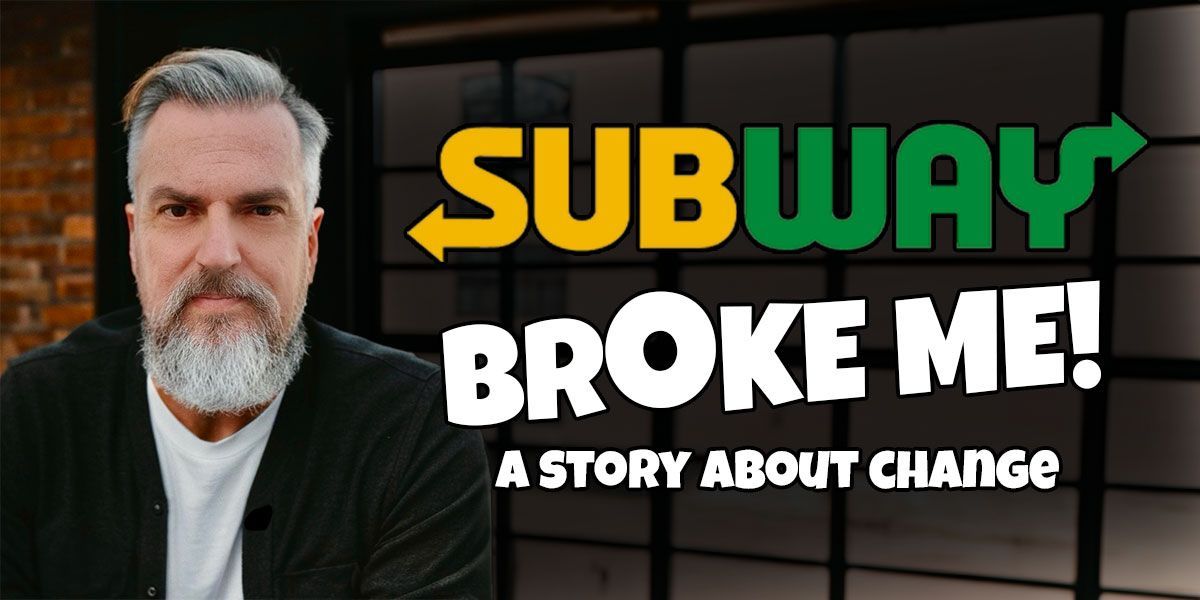
By Thomas Dickens
•
January 15, 2024
I had what I considered the perfect Subway sandwich combination: a 6-inch Tuna with lettuce, tomato, and onion, gloriously bound together with what I considered to be the perfect honey mustard. It was my go-to sub, my lunchtime constant. And then, just like that, Subway changed the recipe for their honey mustard. The new version now clashed with the rest of the tuna. I was heartbroken. Over a sandwich, yes, but it kind of felt like losing a small piece of my world. Would I ever be able to eat at Subway again?! Our local Subway shop is staffed by some of the nicest, coolest people. So, on my next visit I talked with them about the change. They proceeded to guide to me to new sandwich combos. I realized how much fun it was going in to see what suggestion the crew had for that day. There were some misses but overall, I loved discovering a new world of sandwiches. And while I will always miss my beloved tuna, I am happy to have some other flavors that I now keep at the top of my list – like the “Outlaw” and its chipotle sauce goodness. You might chuckle at the idea of a sandwich teaching life lessons but hear me out. Last week, I was part of the latest round of layoffs in the tech industry, a sector where ‘change’ is practically its middle name. When I got the news, it was like losing my lunchtime staple – it was surprising, a bit disorienting, and it threw off my routine. I had so much to do that was suddenly gone. But then, it hit me: this is just like the Subway sandwich shake-up! I see this as a jolt that will open the door to reassessing what I really want. It’s about seeing the blank slate in front of me. The point is – change is part of the game – in sandwiches and in careers. It’s less about what happens to you and more about how you pivot. I’m not just waiting for the next thing; I’m actively scouting for it, eager to dive into uncharted waters. Maybe it’s time to target a start-up, or venture into a field I’ve always been curious about but never tried. So, if you’re staring down the barrel of change, whether it’s a new item on your favorite lunch menu or a career curveball, here’s my two cents: Push into it. New opportunities, much like new flavors, are often discovered in the most unexpected places. Who knows, the next chapter might just be your best one yet.

Overseeing Marketing Vision And Strategy
Experience in leading marketing at companies like Rightpoint, Hoodoo Digital, and Western Digital Corporation demonstrates my ability to oversee and drive a comprehensive marketing vision and strategy.
Let's Connect!
Contact Us
Thank you for contacting us.
We will get back to you as soon as possible.
We will get back to you as soon as possible.
Oops, there was an error sending your message.
Please try again later.
Please try again later.
© 2025
All Rights Reserved | Thomas Dickens
Privacy & Terms
We use cookies to ensure that we give you the best experience on our website. To learn more, go to the Privacy Page.
×

